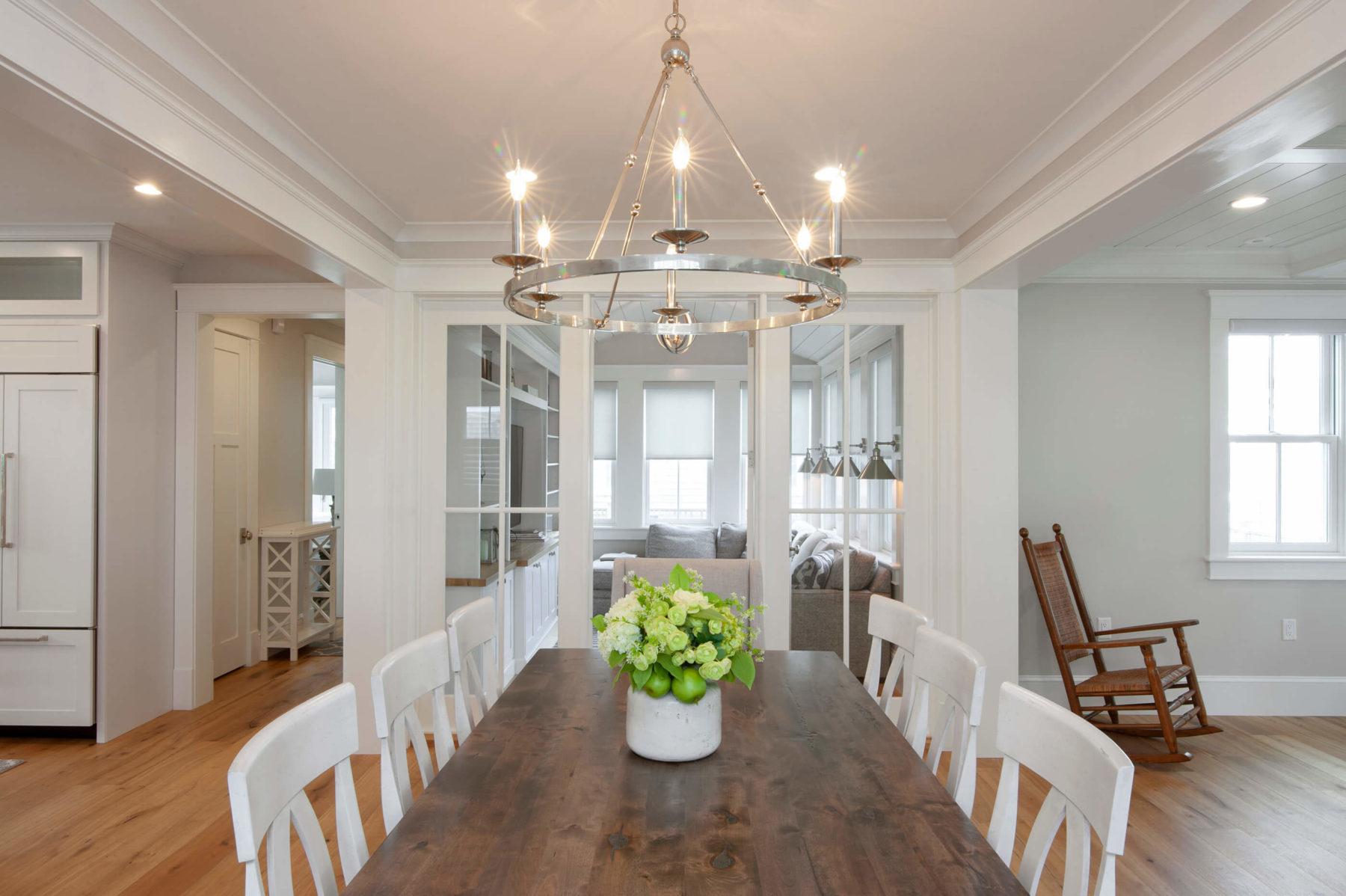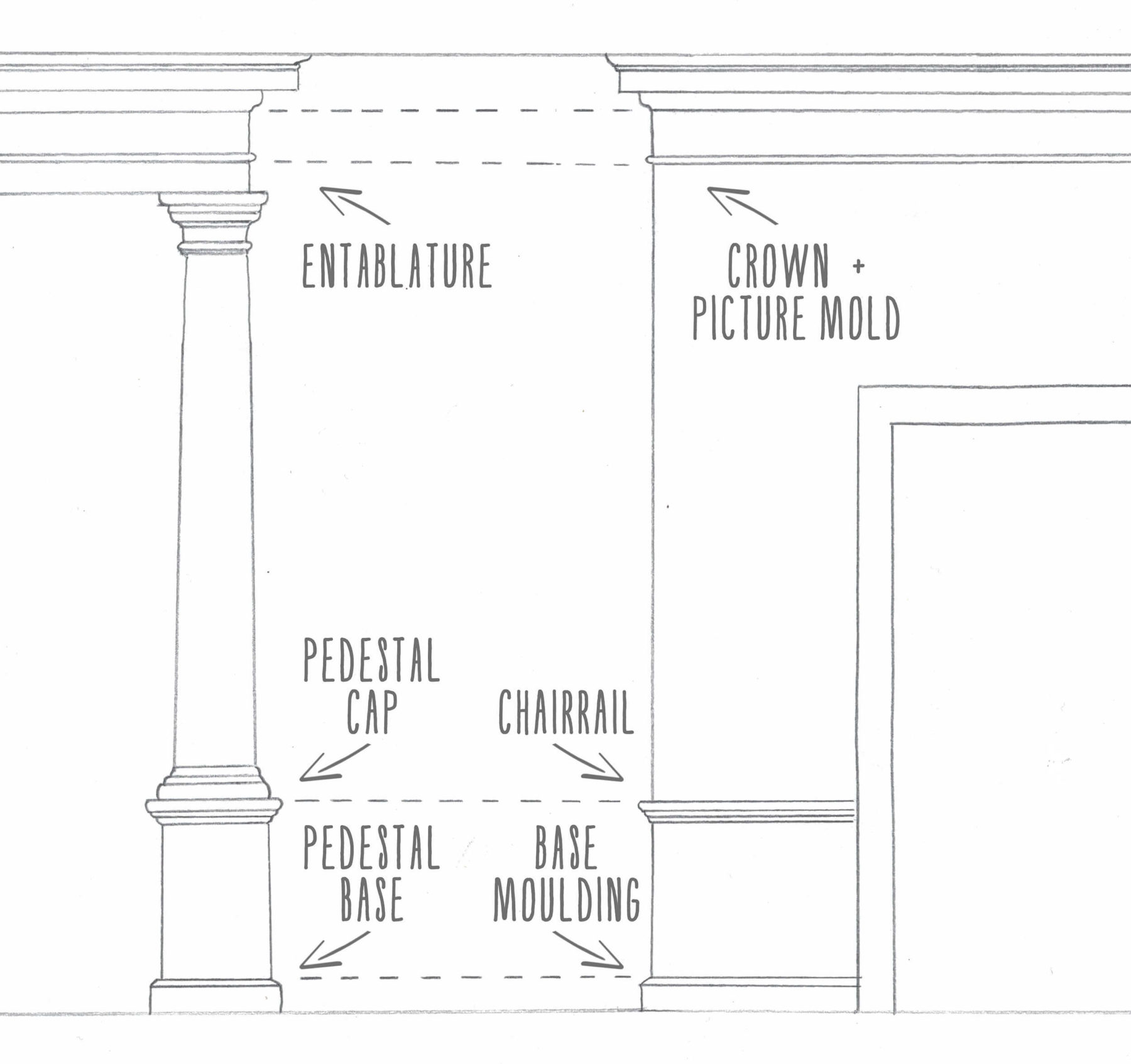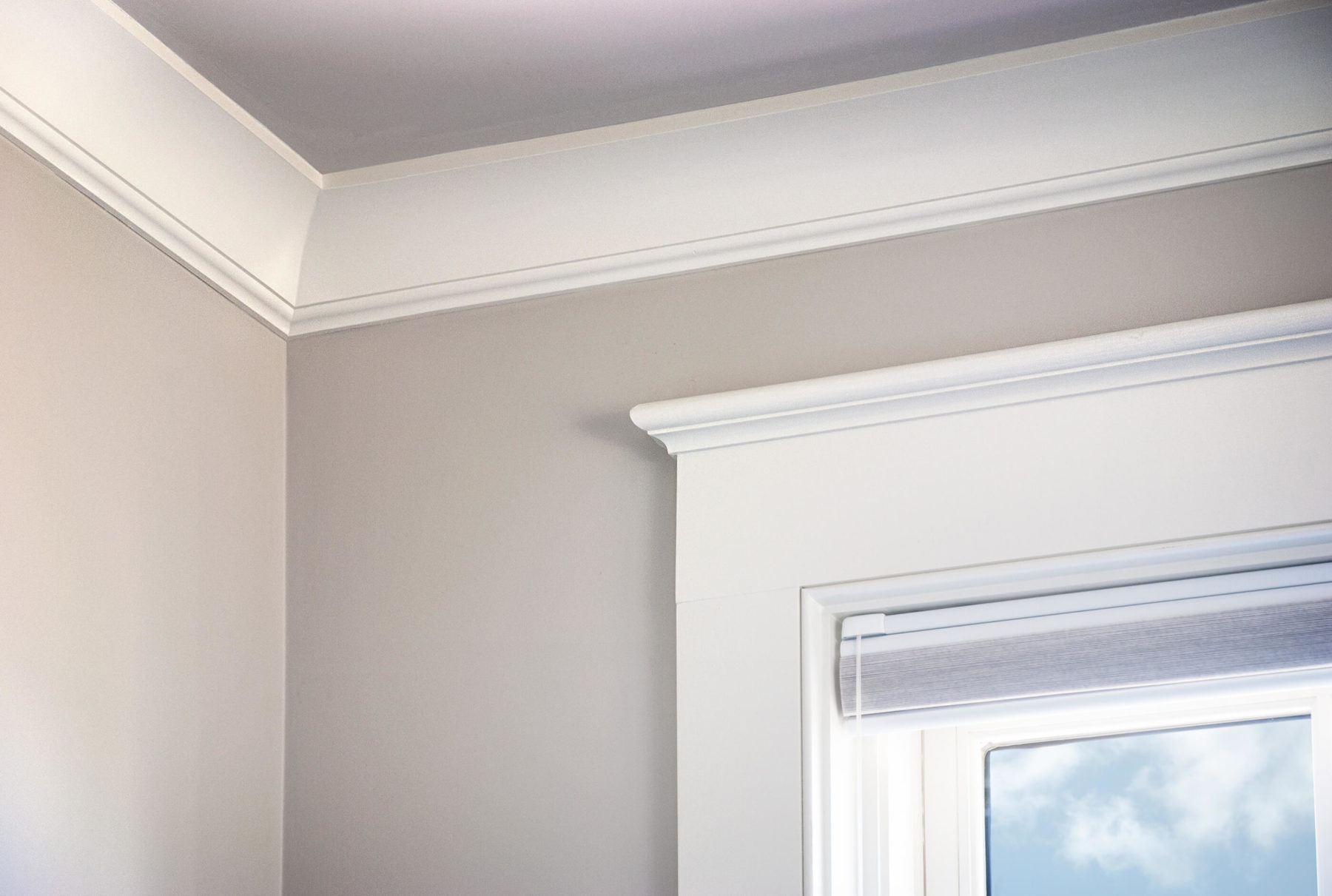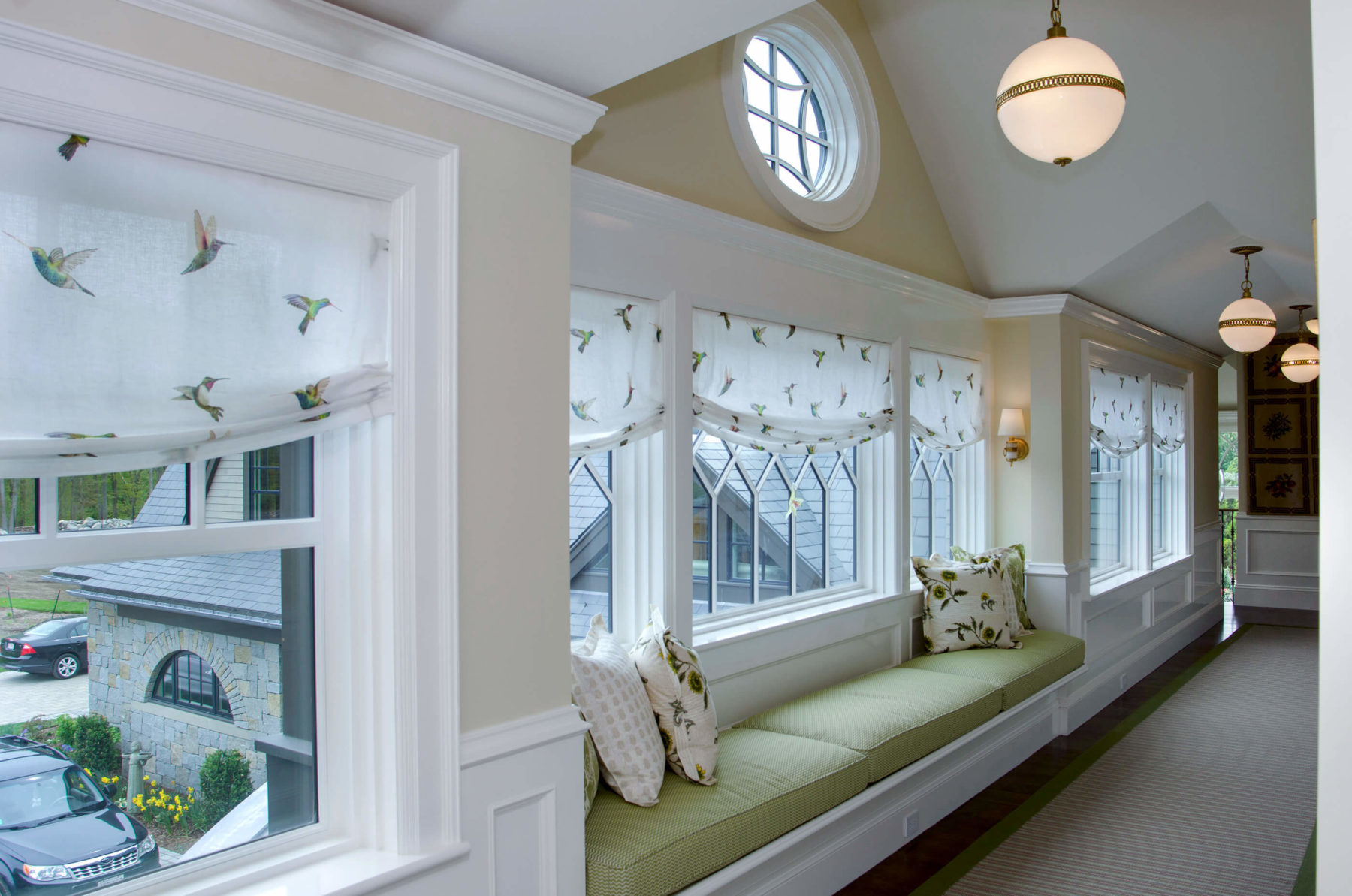

Crown moulding plays an important architectural role in traditional interior design. It can distinguish formal public spaces from casual private spaces, and add an element of luxury or charm. Crown moulding in concert with other trim, establishes balance and proportion in a room, and creates a space that is pleasing to the eye.
Knowing how important crown moulding is, it can be intimidating to choose the correct size and style. There are some clear and simple rules that every architect, builder, and homeowner should keep in mind when choosing the perfect crown moulding for a space.
To determine the correct size crown to use, we look to the Orders of classical architecture. The crown moulding, along with other trim, directly relate to the historic columns of antiquity. When comparing traditional mouldings to the Doric Order of ancient Greece, the base moulding relates to the pedestal base, the chair rail relates to the pedestal cap, and the crown moulding relates to the column’s entablature or cornice.

The drawing illustrates how the location and scale of traditional residential trim elements such as the crown moulding, picture mold, chair rail, and base moulding relate to the Orders of classical architecture.
Using these principles, we can determine what size crown molding will work best in a space. A room with high ceilings can carry a larger crown, whereas a room with standard 8 foot ceilings would need a smaller crown to maintain classical proportions. The square footage of a room also plays a role in choosing crown size. A large elaborate crown may seem appropriate for a formal office with high ceilings, but may look overbearing if that office does not have ample square footage. In this scenario, choosing a smaller, well-designed crown moulding would maintain balance and proportions, while other trim elements such as a paneled wainscoting and grander door casings could add a touch of luxury.

PRO-TIP: A simple, well-designed crown that is architecturally correct for a space can have a bigger design impact than an oversized, elaborate crown that is proportionally wrong.
8 Foot Ceilings
For an 8 foot ceiling height the recommended crown size is 2-1/2″ to 6″ tall with no picture mold. Use the square footage and level of formality of the room to choose an appropriate crown size and style in that range.
9 feet ceilings can sustain a larger crown, typically 3″-7-1/2″ plus the addition of a picture mold in formal public spaces. Sometimes referred to as a cornice, these larger crowns are often “built-up” using a combination of 2 or more moulding profiles.
10+ Foot Ceilings
To make a visual impact in rooms with ceilings that are 10 feet or taller, a larger crown is necessary. Even in casual spaces, the crown should be a minimum of 4″ while formal spaces will need a crown of at least 9″. In some cases, you will want a full entablature (cornice + picture mold) that is up to 24″ in height.

By following these guidelines, you can feel confident your space with will have balance and follow classic proportions of craftsmen throughout history. If you’d like to further explore how classical architecture can best influence building today, check out Get Your House Right: Architectural Elements to Use & Avoid. For more examples of crown moulding and other trim profiles, see the Horner Millwork Stock Moulding Catalog.
This article is one of many resources in the Homeowner's Project Handbook. The Homeowner’s Project Handbook (HPH) provides a directory of AIA architects working in Massachusetts, while highlighting the value that architectural expertise brings to new construction and renovation projects. Explore this free, sustainable, searchable digital resource for homeowners and small business owners considering renovations, additions, or new construction projects.
Designing your next home to the Passive House standard maximizes comfort, healthy indoor air, durability, and energy efficiency, while minimizing your carbon footprint. Passive House level energy performance is the result of 1) thoughtful design, 2) a super-insulated building envelope, 3) high efficiency systems, and 4) renewable energy, prioritized in that order, and all working together as a system.